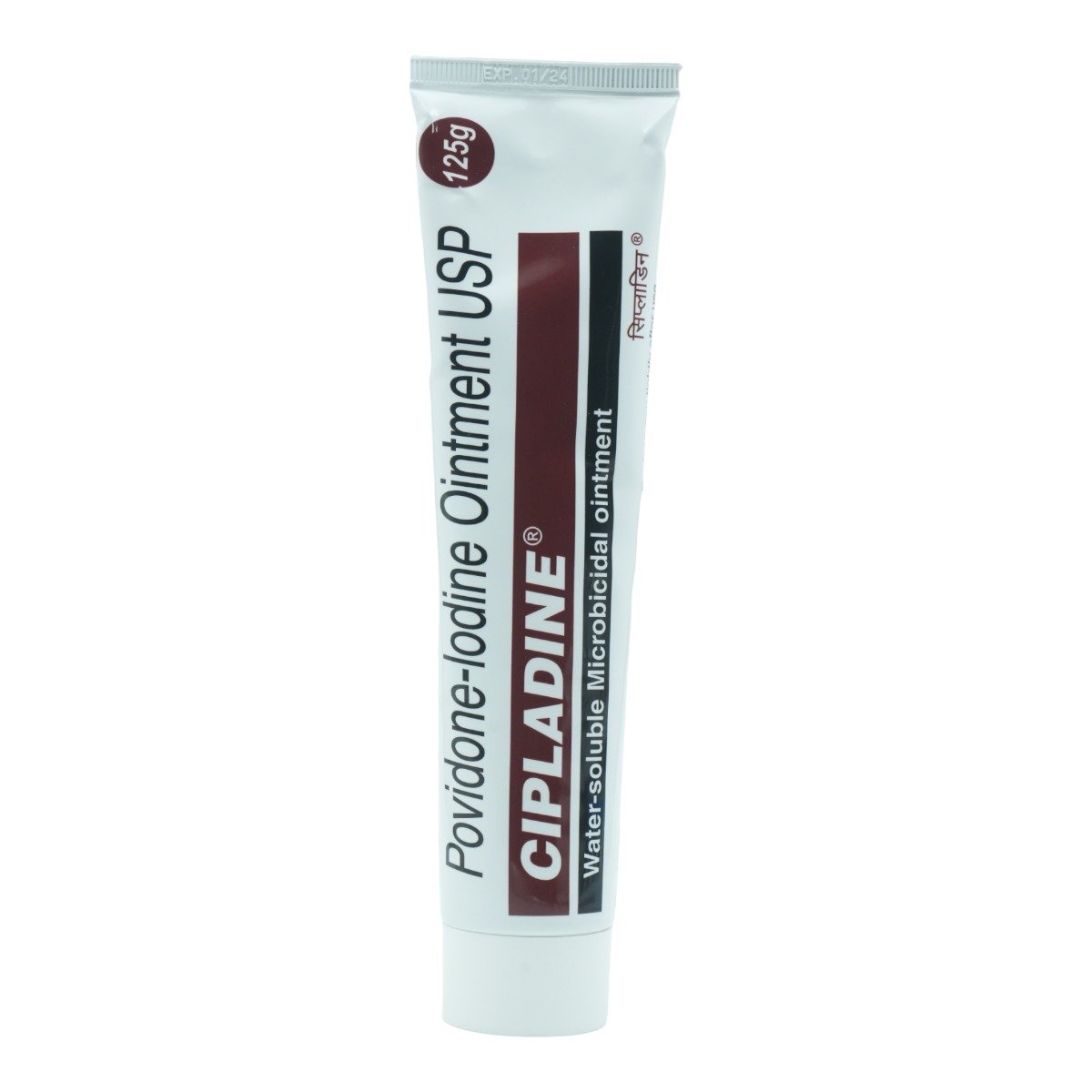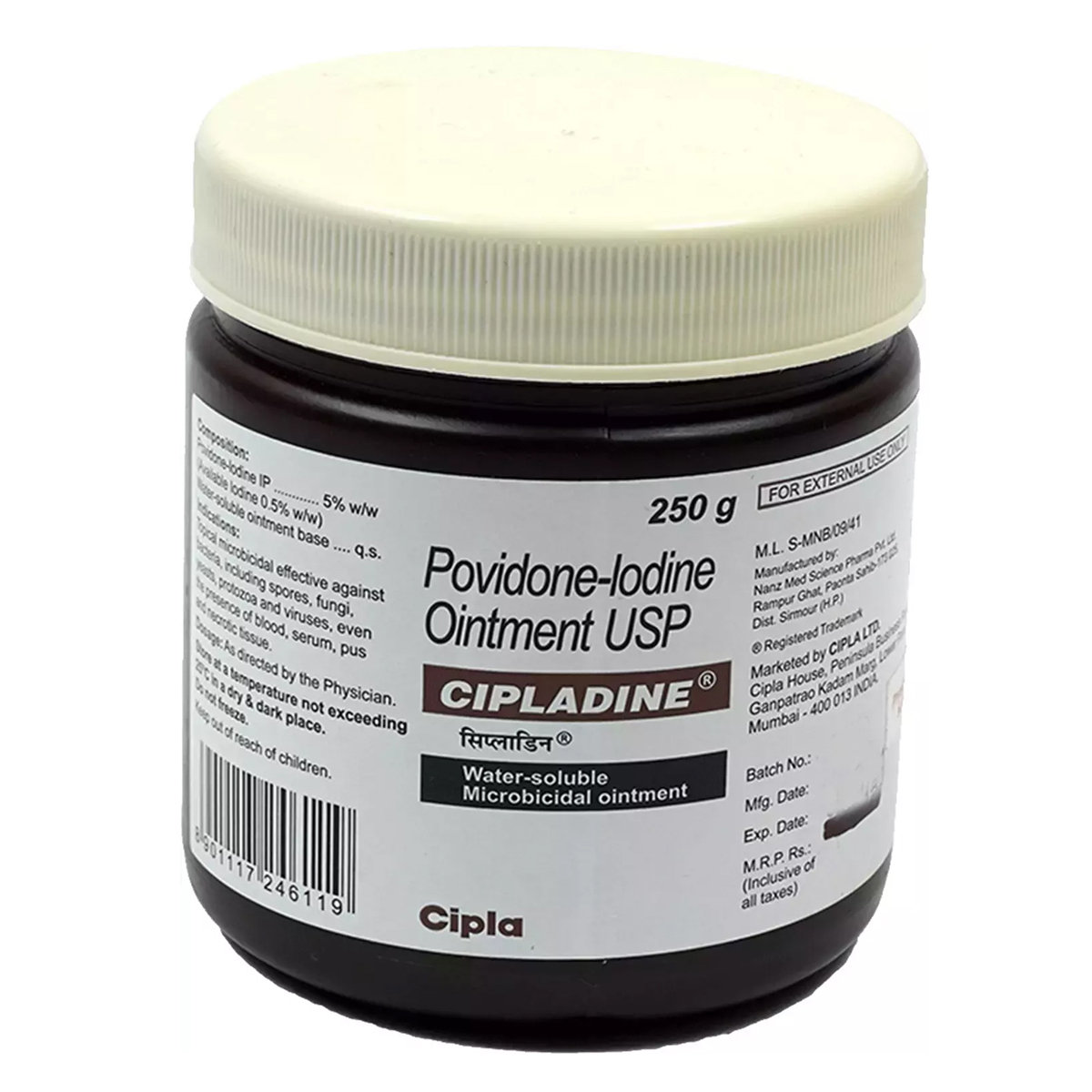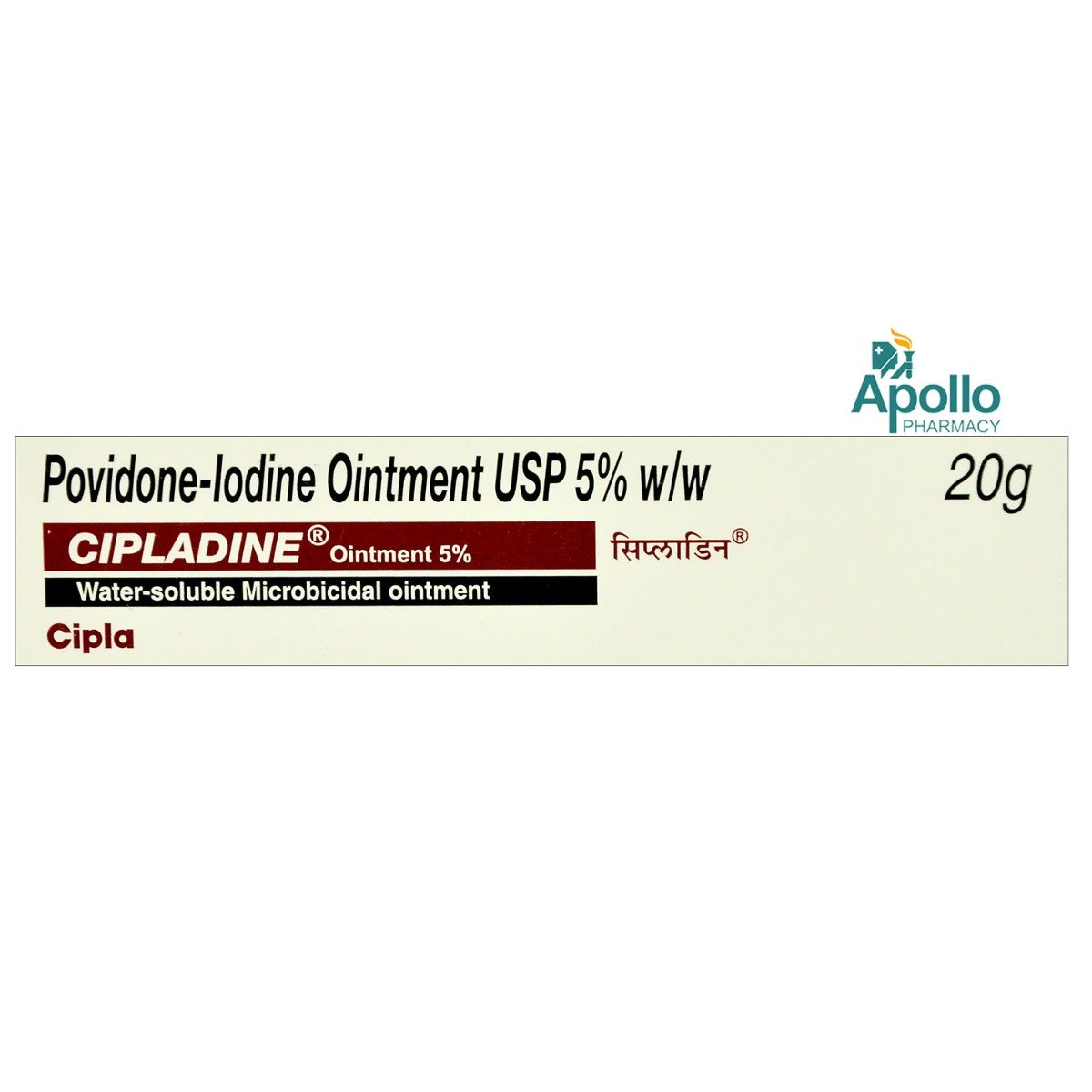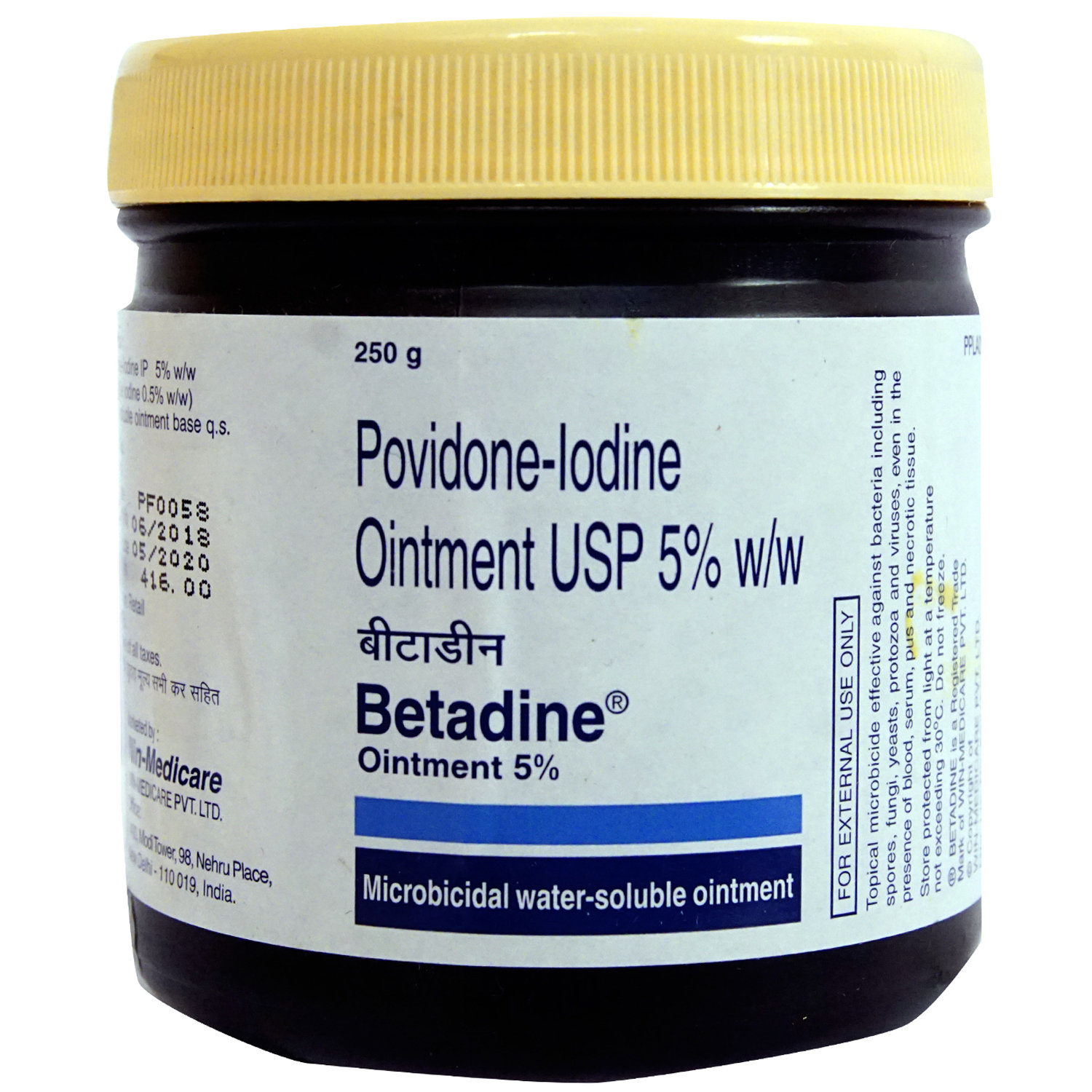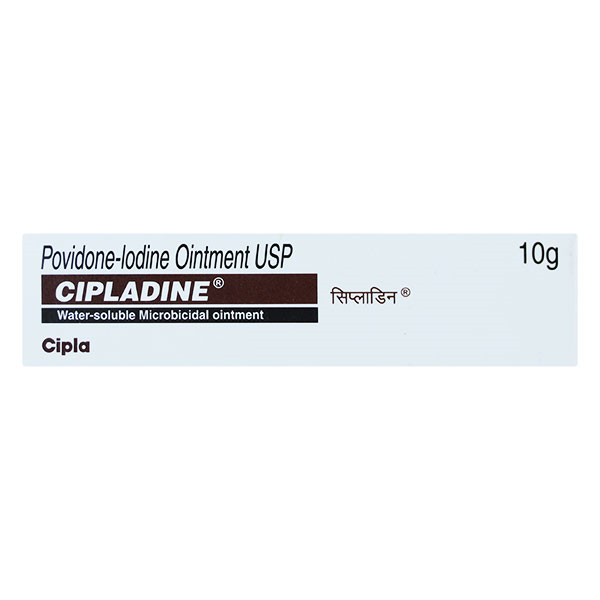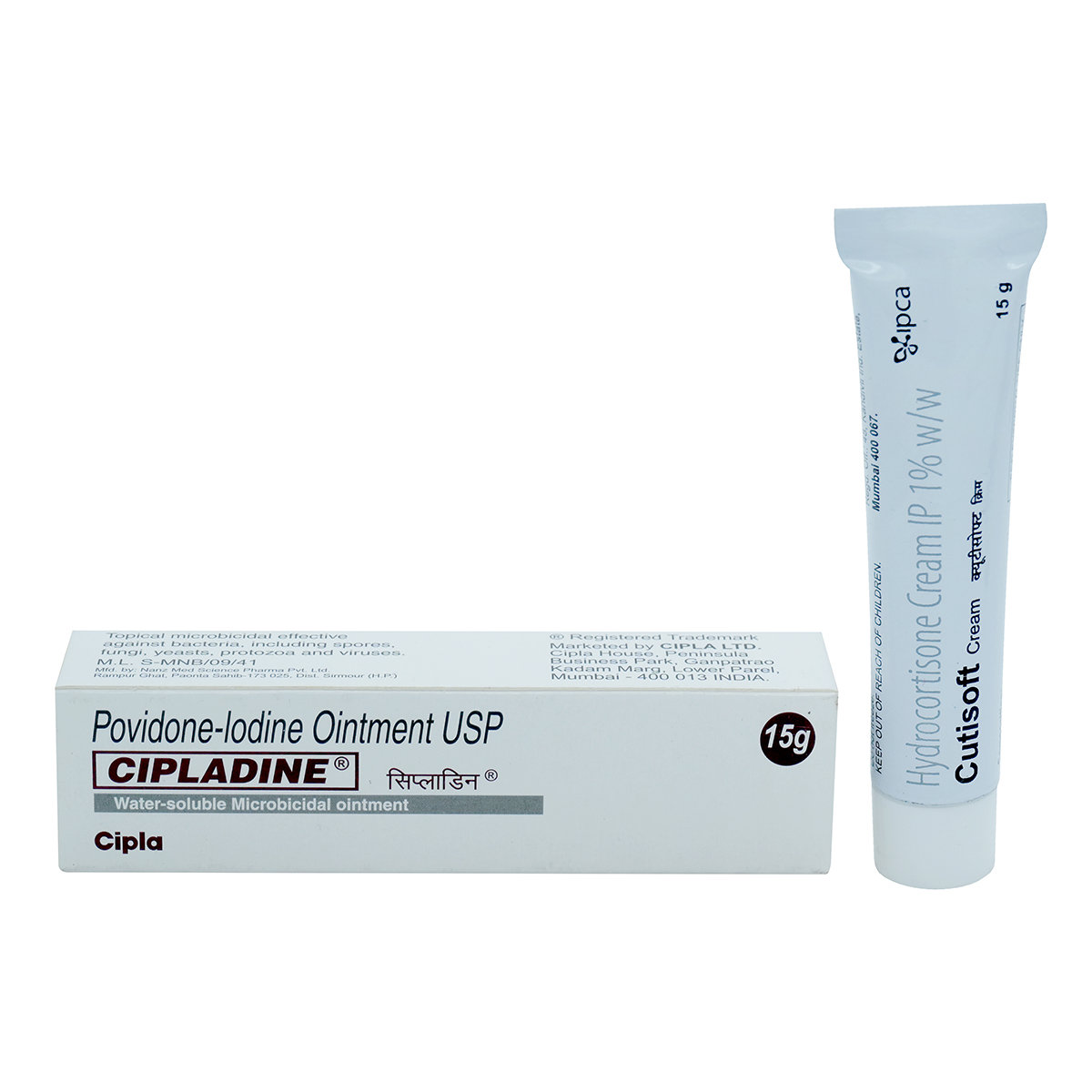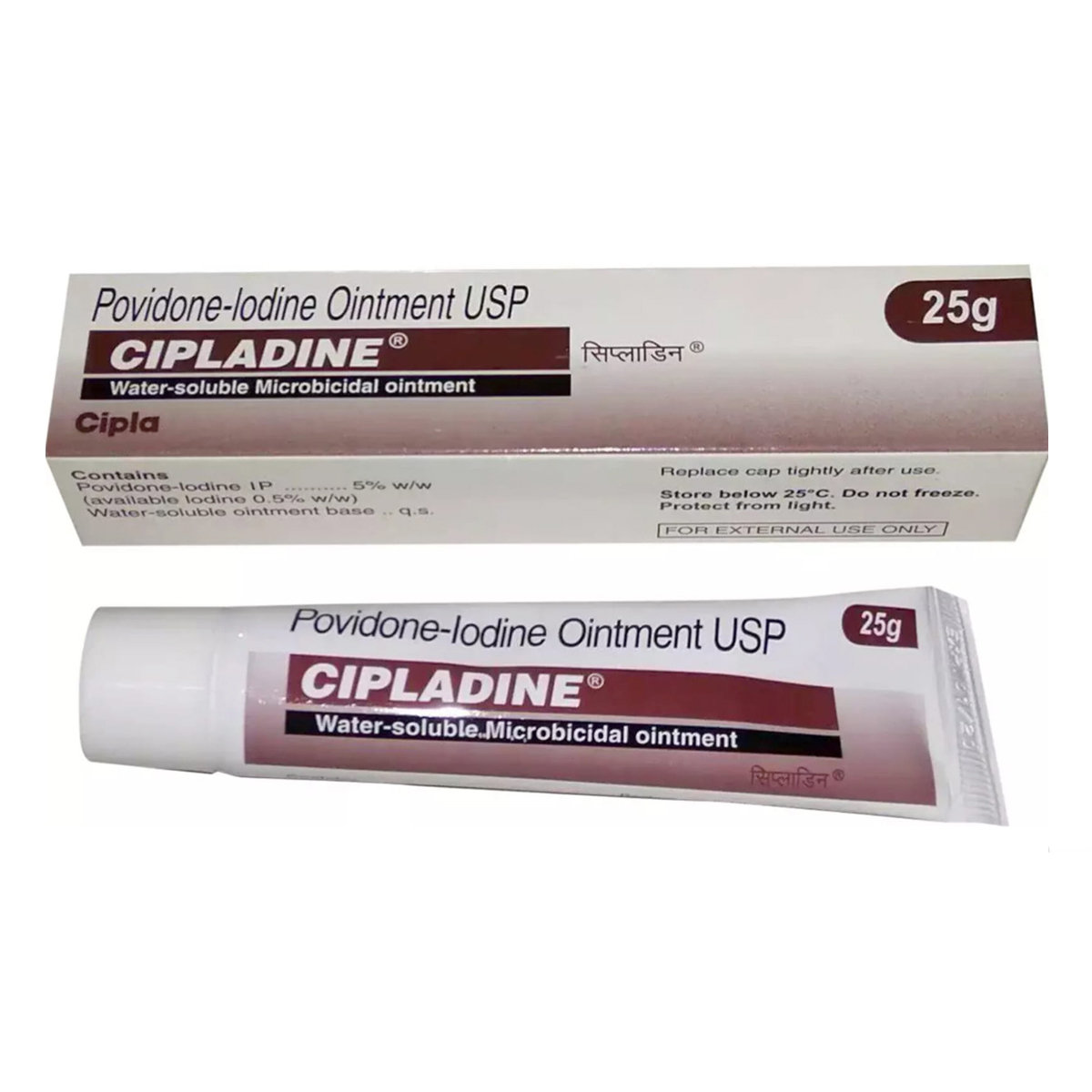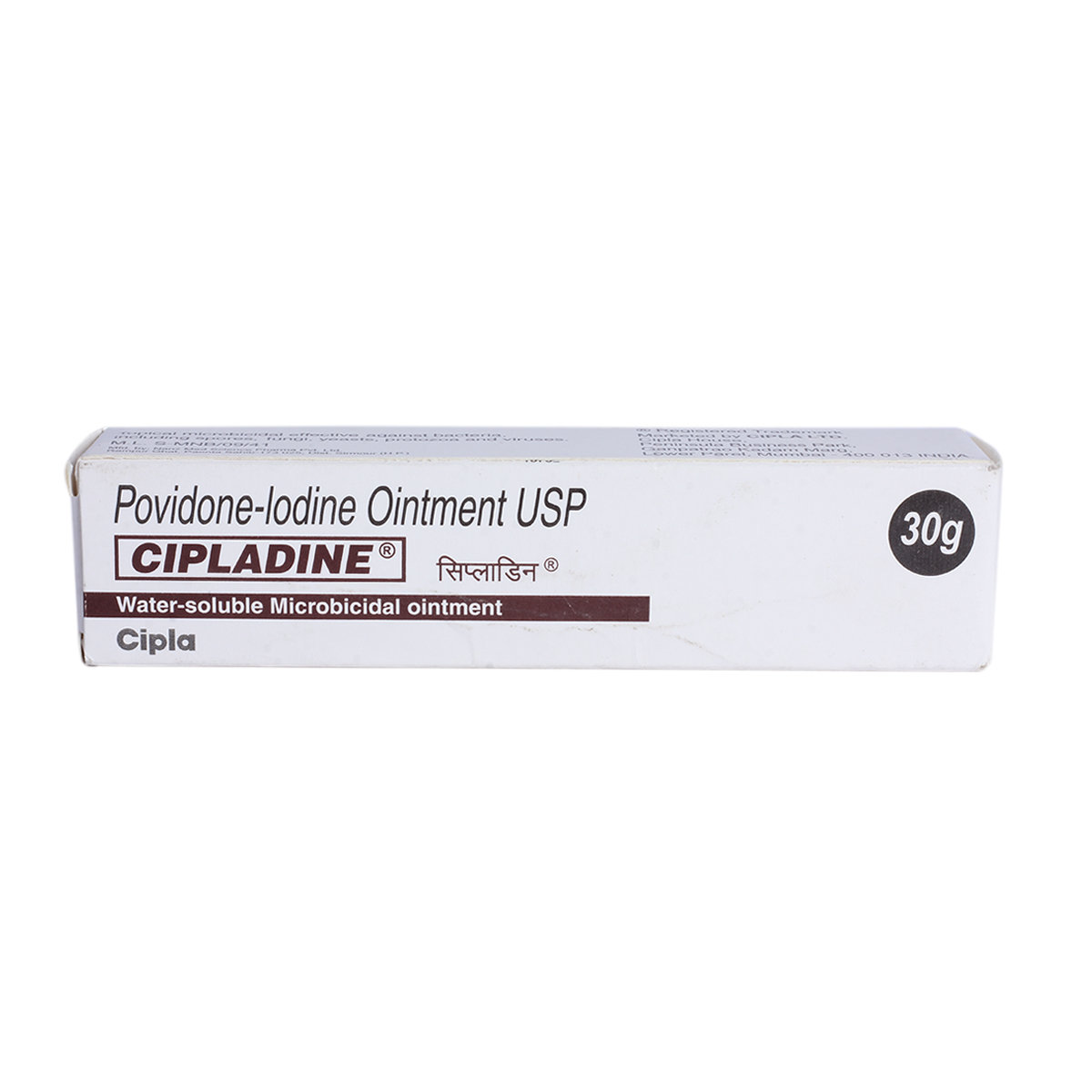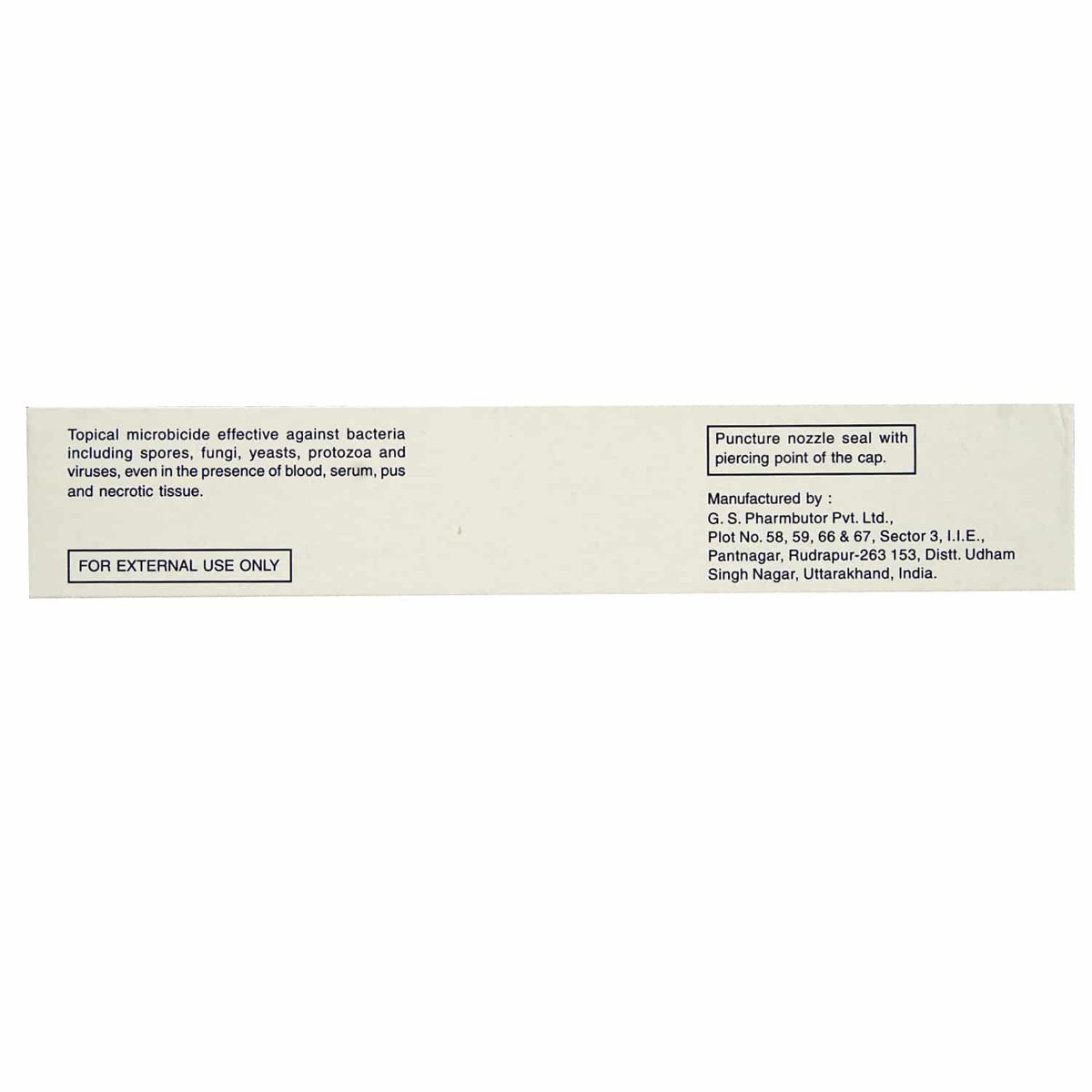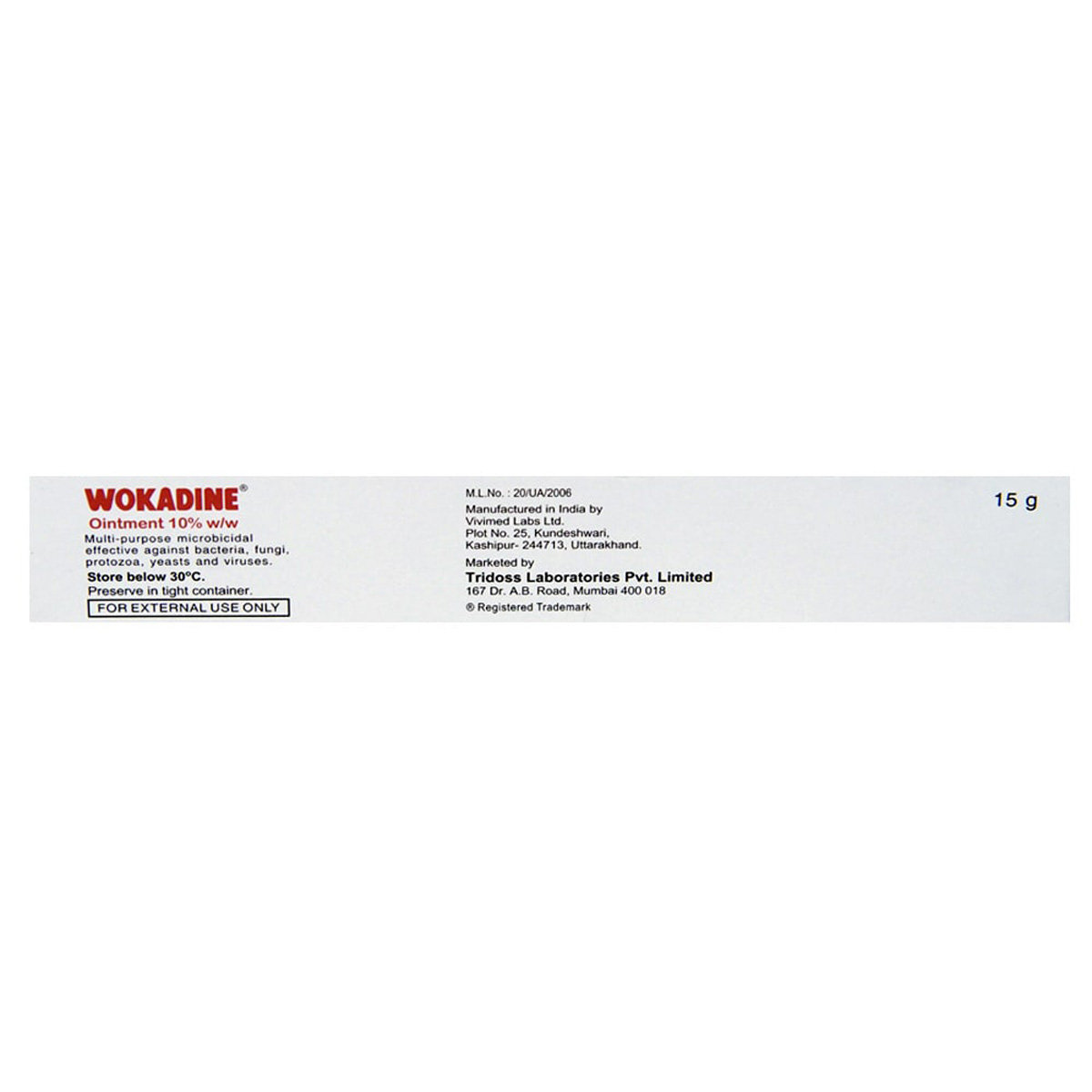- Home
- Aanid Ointment
Aanid Ointment Substitute
Aanid Ointment Substitute
Medicine Composition:
POVIDONE IODINE-5%W/WAll Substitutes & Brand Comparisons
RX
Cipladine 5% Ointment 125 gm
Cipla Ltd
₹192.5
(₹1.23/ 1gm)
14% CHEAPERRX
Betaseptic Ointment 15 gm
Modi Mundipharma Pvt Ltd
₹26
(₹1.56/ 1gm)
8% COSTLIERRX
Cipladine 5% Ointment 250 gm
Cipla Ltd
₹493
(₹1.58/ 1gm)
9% COSTLIERRX
Wokadine 5% Ointment 125 gm
Wockhardt Ltd
₹266
(₹1.92/ 1gm)
33% COSTLIERRX
Bectodine Ointment 10 gm
Ranbaxy Laboratories Ltd
₹22.25
(₹2.0/ 1gm)
38% COSTLIERRX
Cipladine 5% Ointment 20 gm
Cipla Ltd
₹61
(₹2.44/ 1gm)
69% COSTLIERRX
Betadine 5% Ointment 250 gm
Win Medicare Ltd
₹686.5
(₹2.47/ 1gm)
71% COSTLIERRX
Cipladine 5% Ointment 10 gm
Cipla Ltd
₹32.5
(₹2.6/ 1gm)
80% COSTLIERRX
Cipladine 5% Ointment 15 gm
Cipla Ltd
₹49
(₹2.61/ 1gm)
81% COSTLIERRX
Cipladine 5% Ointment 25 gm
Cipla Ltd
₹82
(₹2.62/ 1gm)
81% COSTLIERRX
Cipladine 5% Ointment 30 gm
Cipla Ltd
₹98.5
(₹2.63/ 1gm)
82% COSTLIERRX
Betadine Ointment 125 gm
Win Medicare Ltd
₹392.5
(₹3.14/ 1gm)
118% COSTLIERRX
Betadine Ointment 25 gm
₹90.5
(₹3.62/ 1gm)
151% COSTLIERRX
Beflar Ointment 10 gm
Flaring Formulations Pvt Ltd
₹41
(₹4.1/ 1gm)
184% COSTLIERRX
Wokadine 10% Ointment 15 gm
Tridoss Laboratories Pvt Ltd
₹98.5
(₹5.91/ 1gm)
310% COSTLIER

When Should You Consider Switching from Aanid Ointment?
Patients may explore substitutes in the following scenarios:
- High monthly cost of Aanid Ointment
- Non-availability in local pharmacies
- Generic recommendation by a doctor
- Side effects or better tolerability with alternatives
What to Know Before Switching
Before you switch from Aanid Ointment to another medicine, here are some important points to keep in mind:
Same salt, different brands:
Most substitutes contain the same active ingredient - POVIDONE IODINE-5%W/W, but the fillers, coating, or manufacturing quality may vary slightly.
Consult your doctor first:
Even if the salt is the same, your doctor can confirm if the substitute is right for your condition, dosage, and health history.
Watch out for allergies or reactions:
Some people may react differently to certain brands due to inactive ingredients. If you notice any side effects, inform your doctor immediately.
Price ≠ effectiveness:
A lower-priced substitute doesn't mean it's less effective. Many generic medicines work just as well as branded ones.
Check the dosage form and strength:
Always match the substitute’s strength (e.g., 5mg, 10mg) and form (tablet, capsule, syrup) with what your doctor prescribed.
Uses
Aanid Ointment is used to treat and prevent common skin infections. The detailed uses of Aanid Ointment are as follows:
- Heals minor wounds and cuts: Aanid Ointment helps prevent and treat infections in cuts, scrapes, and abrasions.
- Treats minor burns: It is effective in preventing infections in superficial burns.
- Prevents skin infections: Aanid Ointment acts as an antiseptic for lacerations and broken skin to avoid microbial contamination.
- Used in surgical preparation: It is applied to disinfect the skin before surgical procedures to reduce the risk of infection.
Medicinal Benefits
- Aanid Ointment helps reduce the risk of infection in minor cuts, burns, lacerations, and abrasions.
- It promotes faster wound healing by keeping the area free of harmful microbes.
- Aanid Ointment contains povidone iodine, which has a broad-spectrum antimicrobial action. It is effective against a wide range of bacteria, including both gram-positive and gram-negative strains.
- It offers protection against various fungi, viruses, and protozoa that may cause skin infections.
- Prevents colonisation and spread of microbes in wounds and injured skin.
- Helps maintain a sterile environment at the wound site.
- Cleanses wounds by removing dirt, dead tissue, and contaminants.
- Supports natural healing processes by minimising microbial interference.
FAQs
The substitutes of Aanid Ointment contain the same active salt(s) - POVIDONE IODINE-5%W/W. However, they may differ in price, manufacturing quality, and inactive ingredients. Speak to your doctor to find a suitable option.
Switching to a generic substitute medicine in the place of Aanid Ointment is often possible if it has the same salt, strength, and dosage form. But always check with your doctor before making any changes to your medication.
Generics versions of Aanid Ointment are typically more affordable because they don’t include the original brand's research, development, and marketing costs. They contain the same active ingredient and are approved for safety and effectiveness.
Most people don’t notice any difference. However, some may react to different fillers or coatings. If you notice any unusual symptoms after switching, consult your doctor.
Make sure the new medicine has the same active salt, strength, dosage form. Always confirm the change with your doctor or pharmacist.
Substitutes of Aanid Ointment meet the same safety and efficacy standards as Aanid Ointment, but small differences in absorption or formulation can exist. A doctor can help you choose the right one for your needs.
Yes. Substitutes of Aanid Ointment may vary in color, size, or shape due to differences in manufacturing and branding, but this does not affect how they work.
Yes, it’s generally safe to switch between multiple substitutes of Aanid Ointment if they have the same salt and strength. However, always inform your doctor so they can monitor how your body responds.
Yes, many people safely use substitutes of Aanid Ointment for long-term treatment. Just ensure it’s done under medical supervision.
If your symptoms stay under control or lab results remain stable, the substitute for Aanid Ointment is likely working well. Regular follow-ups with your doctor are important.
Absolutely. Even with the same salt, small differences can affect how your body responds when switching from Aanid Ointment to its substitute. Always consult your doctor before switching.
Aanid Ointment is primarily used to treat and prevent common skin infections. It is effective for skin infections in minor burns, lacerations (deep cuts in the skin), cuts, and abrasions (where the first layer of skin is scraped off).
Aanid Ointment works by inhibiting the growth of infection-causing microbes. As a small molecule, Iodine in Aanid Ointment can easily penetrate microorganisms and oxidise essential proteins, nucleotides, and fatty acids, leading to cell death.
Aanid Ointment is not recommended for use if you are undergoing any lithium therapy or treatment involving radioactive iodine. Aanid Ointment should not be used before or after radioiodine scintigraphy or radioiodine treatment of thyroid carcinoma. In such conditions, please consult your doctor before using Aanid Ointment.
Aanid Ointment may interfere with thyroid function tests due to the absorption of iodine. Please consult your doctor before starting Aanid Ointment if you have any history of thyroid problems. Aanid Ointment may also yield false-positive lab results, such as tests using toluidine or guaiac, to detect haemoglobin or glucose in the stool or urine.
Please consult your doctor if you are using any other topical medicines before starting Aanid Ointment. However, products containing an enzymatic component, alkali, mercury, silver, hydrogen peroxide, tannic acid, and taurolidine may interact with Aanid Ointment and should not be used simultaneously.
Aanid Ointment is typically used until the wound (minor cuts, scrapes, and burns) has healed. Treatment duration varies depending on the severity of the wound. Always follow the doctor's specific instructions, and they will determine the duration of usage.
No, Aanid Ointment is not an antibiotic; it is an antiseptic and disinfectant used to heal wounds (minor cuts, scrapes, and burns).
Aanid Ointment can be applied to open wounds as an effective antiseptic, killing bacteria, viruses, and fungi to prevent infections. However, use it cautiously, follow instructions carefully, and consult a doctor for large or deep wounds, as improper use can irritate.
Aanid Ointment can cause staining due to its iodine content. It may temporarily discolour the skin and permanently stain clothing. To minimise stains, wash affected clothing promptly, and the skin will fade with regular washing.
Aanid Ointment can be used for skin disinfection before surgery or injections, wound care for minor cuts and burns, gynaecological procedures, and first aid for initial wound cleaning.
To apply Aanid Ointment to an injury, first, clean the area with soap and water (to remove mud or external particles). Then, using a clean cotton swab or gauze pad, apply the solution to the wound, ensuring it covers the affected area. Allow it to dry naturally. If needed, cover the wound with a sterile bandage. Follow your doctor's advice on reapplication and avoid using it on large or deep wounds without consulting a medical professional.
Using Aanid Ointment may affect your thyroid, depending on the duration of use and individual thyroid health. Since it releases iodine, which influences thyroid hormones, it is crucial to inform your doctor about any thyroid issues before starting treatment. Your doctor will assess the risks and provide personalised guidance.
Yes, Aanid Ointment can be directly applied to the skin. It's often used to clean and disinfect minor wounds, cuts, and scrapes. Follow the instructions on the product label or consult your healthcare provider for proper usage.
Common side effects of Aanid Ointment are redness, peeling skin, dry skin, irritation at the application site, and inflamed skin. Most of these side effects do not require medical attention and gradually resolve over time. However, if the side effects persist or worsen, please consult your doctor.
People who are allergic to Aanid Ointment ingredients, have thyroid problems (like goiter or Hashimoto's disease), or are taking lithium, children before 12 years should avoid using Aanid Ointment unless advised by a doctor.
Store your Aanid Ointment in a cool, dry place away from direct sunlight and heat. Keep it tightly closed in its original container and out of reach of children. Ensure it is stored at room temperature and not exposed to extreme temperatures.
Buy best Dermatology products by
Glenmark Pharmaceuticals Ltd
Canixa Life Sciences Pvt Ltd
Klm Laboratories Pvt Ltd
Sun Pharmaceutical Industries Ltd
Cipla Ltd
Intas Pharmaceuticals Ltd
Abbott India Ltd
Ajanta Pharma Ltd
East West Pharma India Pvt Ltd
Dr Reddy's Laboratories Ltd
Brinton Pharmaceuticals Ltd
Leeford Healthcare Ltd
Alkem Laboratories Ltd
Skinocean Pharmaceuticals
Amwill Healthcare Pvt Ltd
Atopic laboratories Pvt Ltd
Hegde & Hegde Pharmaceutica Llp
Torrent Pharmaceuticals Ltd
Palsons Derma Pvt Ltd
Dermacia Healthcare
Oaknet Healthcare Pvt Ltd
Ipca Laboratories Ltd
Micro Labs Ltd
Med Manor Organics Pvt Ltd
Yaher Pharma
Dermocare Laboratories Gujarat Llp
Apex Laboratories Pvt Ltd
Talent India Pvt Ltd
Kivi Labs Ltd
Mankind Pharma Pvt Ltd
Systopic Laboratories Pvt Ltd
Menarini India Pvt Ltd
Nemus Pharmaceuticals Pvt Ltd
Ethinext Pharma
Zydus Cadila
Regaliz Medicare Ltd
Inex Medicaments Pvt Ltd
Mohrish Pharmaceuticals Pvt Ltd
Hbc Dermiza Healthcare Pvt Ltd
Lupin Ltd
Mrhm Pharma Pvt Ltd
Zydus Healthcare Ltd
Eskon Pharma
GlaxoSmithKline Pharmaceuticals Ltd
La Pristine Bioceuticals Pvt Ltd
Praise Pharma
Wallace Pharmaceuticals Pvt Ltd
Newtrimed Healthcare Pvt Ltd
Biocute Life Care
Glowderma Lab Pvt Ltd
Macleods Pharmaceuticals Ltd
Sol Derma Pharmaceuticals Pvt Ltd
Aurel Biolife
Ethicare Remedies Pvt Ltd
Galcare Pharmaceuticals Pvt Ltd
Kaizen Drugs Pvt Ltd
Percos India Pvt Ltd
Rockmed Pharma Pvt Ltd
Elder Pharmaceuticals Ltd
Rely On Pharmaceuticals
Wockhardt Ltd
Zee Laboratories Ltd
Karlin Pharmaceuticals & Exports Pvt Ltd
Alniche Life Sciences Pvt Ltd
La Med Healthcare Pvt Ltd
Prism Life Sciences Ltd
Yap Bioceuticals
Connote Healthcare
P and P Dermaceuticals Pvt Ltd
Adonis Laboratories Pvt Ltd
Indiabulls Pharmaceuticals Pvt Ltd
Lyra Laboratories Pvt Ltd
Akumentis Healthcare Ltd
Albatross Healthcare Pvt Ltd
Apple Therapeutics Pvt Ltd
Arka Vital Science Pvt Ltd
Gary Pharmaceuticals Pvt Ltd
Rhine Biogenics Pvt Ltd
Yash Pharma Laboratories Pvt Ltd
Dermajoint India
Leogard Pharmaceuticals Pvt Ltd
Dermarex HealthCare India Pvt Ltd
Iceberg Health Care Pvt Ltd
Capital Pharma
Eumedica Pharamceuticals
FDC Ltd
Glasier Wellness Inc
Grace Derma Healthcare Pvt Ltd
Oziel Pharmaceuticals Pvt Ltd
Salve Pharmaceuticals Pvt Ltd
West Coast Pharmaceuticals Pvt Ltd
Entod Pharmaceuticals Ltd
Jenburkt Pharmaceuticals Ltd
Medcure Organics Pvt Ltd
Olcare Laboratories Pvt Ltd
Anhox Healthcare Pvt Ltd
Bioswizz Pharmaceuticals Ltd
Indchemie Health Specialities Pvt Ltd
Omniceutics Healthcare Pvt Ltd
Skinska Pharmaceutica Pvt Ltd
BODY CREAM
Body Lotion
Soap
Face Cream
Shampoo
Sun Screen
Face Gel
Face Wash
HAIR SOLUTION
BODY GEL
Face Serum
Hair Lotion
Hair Serum
Dusting Powder
ANTISEPTIC
Body Wash
Face Lotion
FACE CLEANSER
Body Spray
Foot Cream
Conditioner
Eye Cream
Eye Gel
Cleanser
Hair Cream
Hair Gel
Hair Spray
FUNGAL INFECTION
Hair Oil
Sanitizer
Specialty Supplements
Face Mask
Skin Ointment
Lip Balm
Capsule
Eye Serum
Intimate Wash
Hand Cream
Facial Spray
Face Toner
Hand Wash
SPECIALITY SUPPLEMENT
Tablet
BABY SUNSCREEN
Body Butter
Body Scrub
EYE SOLUTION
FACIAL WIPE
Gargle
Hair Color
Hair Mask
Hair Tonic
Intimate Spray
Lip Serum
VITAMIN D

